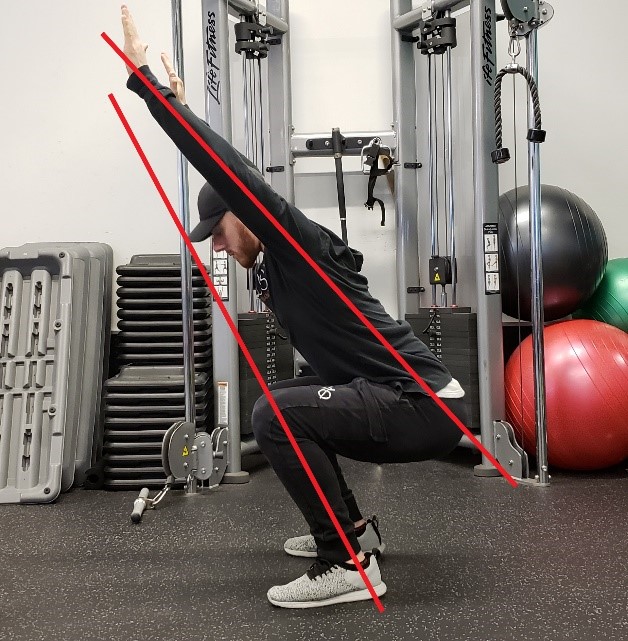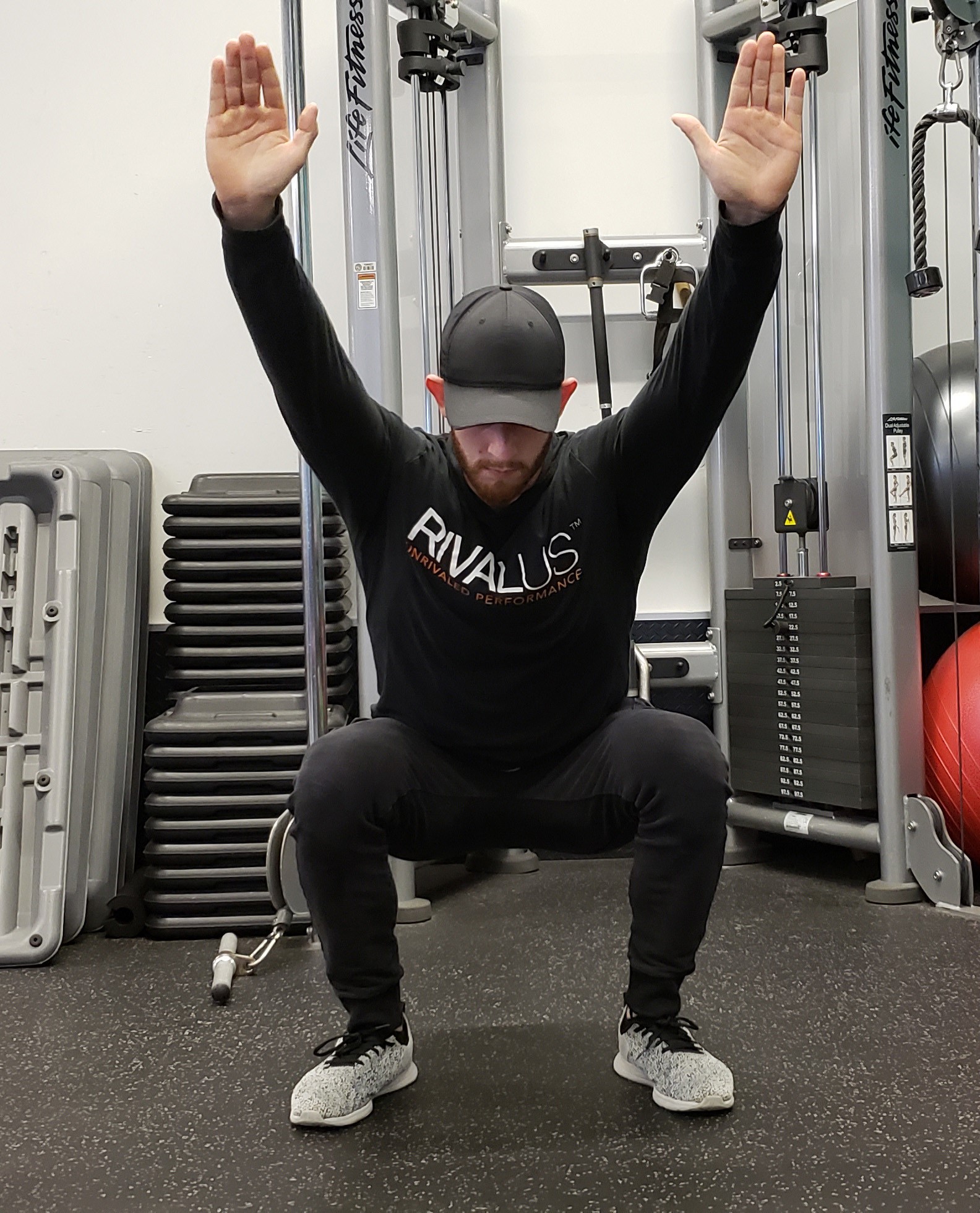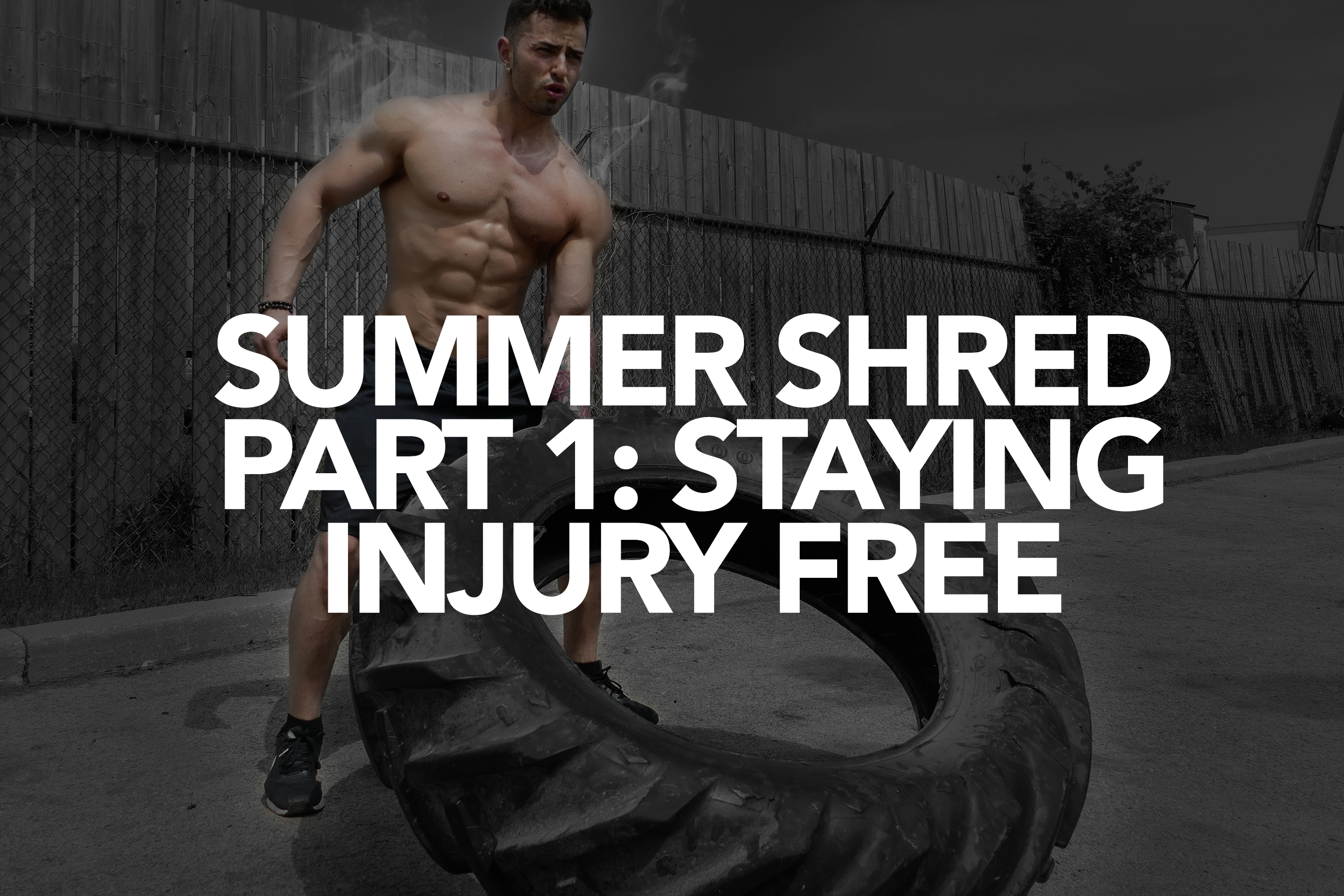Summer Shredding Part 1: Staying Injury Free
Posted by Team RIVALUS on Jul 3rd 2018
This information is solely for informational
purposes. A physician or other qualified health practitioner should be
consulted to assess your personal health and fitness prior to starting any new
diet or exercise program. Any reliance that you place on this material is
strictly at your own risk. Rivalus disclaims all liability and responsibility
arising from the use of this material. For details, please see our Terms of Use & Policies.
Rivalus Summer Shredding Blog 1: Staying Injury Free
Welcome to the Summer Shredding Series presented by RIVALUS. In this 3 part series, we’ve taken one of our trainers, and worked diligently to develop and provide you with a guide to help you maximize lean muscle, decrease as much fat as possible and maintain a hormonally balanced healthy physique. But before we get to the training, we want to provide you with the necessary steps to prepare yourself for more vigorous activity, and the knowledge required to understand why certain variables in the program are going to be so crucial to your success. Yes, the first article may be a little dry, but its importance can’t be overlooked!
But none of that matters if you end up injured mid-way in the summer! The training is going to be seriously intense, which means that your body needs to be prepared for the physical stress it will have to endure. Remember that the body acts as a chain. Each and every link on the chain is crucial to the success of the next link in line. Before we get into the training, we first need to go over some assessments that you should run on yourself before you get into the training in order to ensure you can resolve any issue before we begin. First let’s look at a basic 3 step process to how an injury happens:
- 1. A tight muscle leads to an un-even posture. Example: A tight upper trapezius muscle may consequently elevate one of your shoulders, or tight chest may lead to a hunched over look with your shoulders fallen inward.
- 2. An un-even posture leads to altered movement patterns. Example: Now that your upper trap muscle is tight, when you lay down for a bench press, this may un-naturally put one of your shoulders into a vulnerable position. Think of the wheels on a car. Everything is good until you hit a big pothole in the middle of the road. You obviously keep driving, but little did you know that now the wheel alignment is slightly off. In time, this could lead to some serious damage and costly repairs, unless remedied!Same goes for your body. We often don’t notice these small issues…until the problem happens.
- 3.These altered and un-even movement patterns eventually lead to injury. When you were a kid, did you ever chase after someone only wearing one shoe? Remember how awkward that felt? Imagine a part of your body that always feels like that! Eventually it leads to pain.
First and foremost, make sure that you have a regular stretching or mobility routine built into your daily habits and become aware enough of your own body to realize when something feels off. A fantastic way to relax and have a deep sleep, is to get a quick 15 minute stretch before bed. Focus on your breathing, relax, and loosen up.
HOW TO RELIEVE OR RELEASE A TIGHT AREA:
Have a specific spot that needs work? No problem! Grab a tennis ball or lacrosse ball and roll/lean into the spot that needs attention. You can also do this with a foam roller, however if you want to get a bit more pin point with the area, use a lacrosse ball. One BIG POINT that people miss, is that it generally takes fascia approximately a full 2 minutes to release, which means you are going to have to withstand some discomfort for a while!Move the ball around very slightly, but for the most part you don’t actually want to move around a lot. You need to maintain pressure to the area in order to actually temporarily inhibit the nerves in the area. Once that’s done, it makes it easier to stretch the area without the muscles signaling themselves to stay in contraction.
- 1. Roll onto the area with a lacrosse ball and hold for 2 minutes (If you’re just looking for temporary mobility and release, simply rolling on any area for 30 seconds is enough to feel looser, just understand that it’s not actually stretching or lengthening your muscle)
- 2. Now you can move into your static stretches to help lengthen the fibers and tissues without or with less discomfort than before.
ASSESSMENT TIME:
Lastly (Before we get out of the boring stuff…yes, we know), let’s go over a quick way to assess your bodies movements. Everyone from professional bodybuilders to Olympic athletes have movement issues that are constantly being dealt with in order to avoid injury.This quick guide will help you assess yourself to ensure you are moving normally, and may even open your eyes to some things about your body you may not have realized. Let’s get into it:
Overhead Squat Assessment:
As per the National Academy of Sports Medicine, the overhead squat assessment is designed to assess flexibility during movement, core strength, balance, and overall neuromuscular control. This test is especially good at finding your weak areas, your strong areas, certain muscles that need to be stretched and released, and muscles that are under-active and need to be turned on!Get your camera ready, or get someone to help video you from both the front and profile view. Let’s get started:
Procedure:
- 1.Stand barefoot with feet shoulder width apart and pointed straight ahead, parallel like train tracks.
- 2.Raise your arms overhead, keeping your arms straight
- 3.Bodyweight squat down to the height of a chair, or until you thighs are parallel to the floor, then return to the starting position.Repeat for 5 reps viewed from the front, back and side.
Now go take a look at the video.You may have to watch it a few dozen times!Start at the feet and move up.
- -Do your ankles collapse inward or your feet flatten?(Stretch your peroneal’s, calves, hamstrings and TFL.Also, your glute medius may be weak, along with your tibialis muscles)
- -Do your feet turn out like a penguin? (Stretch calves, hamstrings and TFL, and add some single leg balance drills into your routine, along with glute work)
- -Do either or both of your knees move either inward or outward when you squat? (Roll out your outer quads and calves, stretch your groin, and train lots of banded sideways glute walks.Anything to help your external hip rotator muscles.)
- -Do you lean forward excessively? (Stretch your abdominals, stretch your hip flexors, stretch your gastrocnemius and soleus.Also, train your glute maximus in some hip hinging movements such as a pelvic thrust or a bridge, as well as your spinal erectors muscles in a movement such as isometric back extension)
- -Does your low back arch?(Stretch your lats, loosen up your spinal extensors, stretch your hip flexors.You likely also probably have a weak core, weak glutes, and maybe weak hamstrings)
- -Does your low back round? (Tight abdominals and obliques, tight hamstrings and tight adductors.Train your glutes, train your core, train your pelvic floor muscles, and get your spinal extensors stronger)
- -Do your arms fall forward? (Upper back needs work, scapula retractors need work, and you likely need to loosen off your chest)
Remember, if you’re not a trainer, you aren't expected to pick up on the minute details, however this can still help you notice certain movement compensations, and give you ways to remedy them.
Here is a close look at how the squat should look. Notice the torso falls forward and doesn’t create a parallel set of lines between the angle of the shin to the torso and arms? Probably tight hip flexors from being seated most of the time!




This concludes article 1 of 3! We hoped this help you gain some awareness of your body, and give you some immediately applicable information that you can take with you into your current training regime. As mentioned, we will be providing you with an entire 4 week plan in article 3, so stay tuned!
Team RIVALUS
This information is solely for informational purposes. A physician or other qualified health practitioner should be consulted to assess your personal health and fitness prior to starting any new diet or exercise program. Any reliance that you place on this material is strictly at your own risk. Rivalus disclaims all liability and responsibility arising from the use of this material. For details, please see our Terms of Use & Policies.
+ Share

